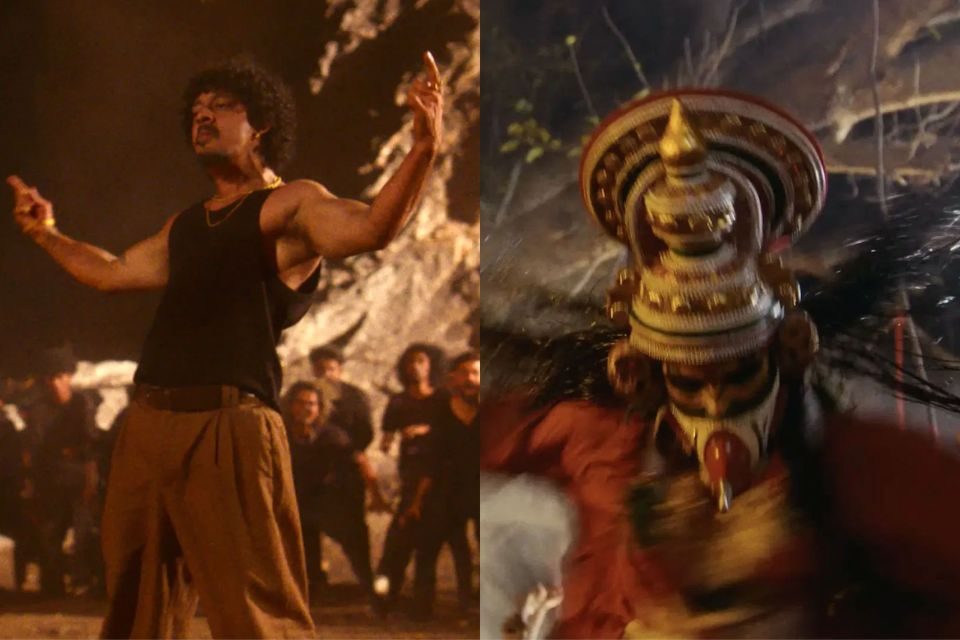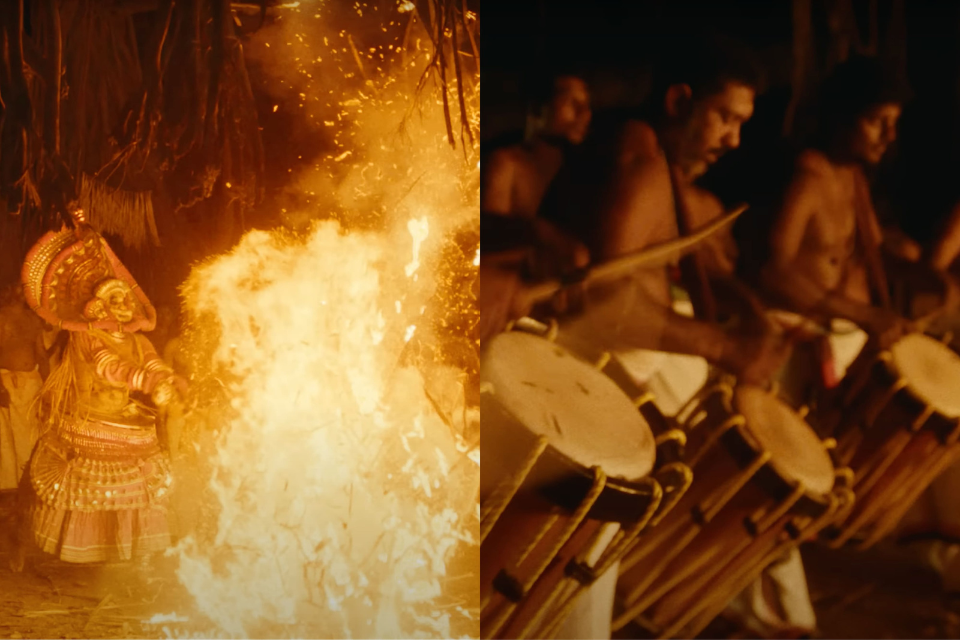Hanumankind’s ‘Run It Up’ Blows the Conch of Change for the Indian Music Industry, Quite Literally! Here’s how it’s a Rap Rebel.
What happens when one doesn’t let social media validation define their future endeavours? They change the crowd’s definition of iconic.

Imagine a 1970s New York party where the DJ suddenly shuffled up the beats from Jazz and Blues to the lively, freshly-birthed Hip Hop. Hip Hop, a form that once started as a voice of the oppressed communities has become one of the most popular go-to music forms of the daring and unapologetic, and Rap is certainly an integral part of it all. The makers of hip hop might be looking on over us fondly as an Indian rapper rose to international fame with a music video featuring the country’s (internationally) unrecognised and vanishing traditional martial arts. Context? March 7th, 2025 had every Indian music lover saying “Wait a minute” as the “Big Dawgs” fame rapper Hanumankind released his new rap video called “Run It Up”.
Sooraj Cherukat aka Hanumankind, is a 32-year-old Indian rapper, singer, songwriter and actor from Kerala, India. After the overnight success of “Big Dawgs” he heralded a storm in the Indian Rap scene with the music video of his new single “Run It Up” featuring about five Indian Martial Art Forms and three South Indian percussion drums. While we have encountered countless lyrically genius rappers, such a cultural representation of India in a rap video is rare and definitely a milestone. Especially after the themes of “Big Dawgs,” here’s why “Run It Up” felt like a personal victory for all of us.
“I put money down on all of us
On my people now, on what I love
…
We dealin' with things you ain't seen before
We feelin' the weight of our ancestors
We healin' with ways that don't last for long”
The lyrics paint a backdrop for what comes later. Kalaripayattu, Gatka, Mardani Khel (ironically performed by a woman in the video), Thang-Ta, and Theyyam are all Indian Martial Art forms which have, over time, become side-lined or are only marginally preserved by local communities. Similarly, the percussion instruments include the classic South Indian Chenda, Parai and Urumi drums, each with their characteristic echo, used to command battle troops or rejoice festive times. In both cases, the crafts developed by our ancestors are receding into oblivion. Hanumankind declares in his lyrics that he is betting on his people, on the native arts that might be lost if the practitioners are not recognized and compensated for their skill.

“Now, we go from angry and mad to happy and glad to find a solution for us (Hu)
We go from sorry and sad to ready to grab our weapons and get to the front”
Instead of constant pleading to appreciate and save these art forms, Hanumankind takes up the spotlight he received from Big Dawgs to vibrantly present the gracefully fierce power of the traditional arts. Not only did this move put Hanumankind at par with (if not ahead of) mainstream creators, the local artists also got a chance to grab their weapons and step into the limelight with him.
Apart from that, the lines quoted above feature a slow, composed tempo, as if putting aside one’s rage over the world’s ignorance and deciding to march forth with self-belief and a stunning showcase. Additionally, mid-way through the song, a conch resounds in the background, usually blown to signal the start of either a battle or an auspicious occasion. In this case, it is both – a rebel and revival fest of the artists!
Painting a diverse picture of India’s regional strengths, what makes these martial arts so essential to be preserved and cherished? Read on.
1. Gatka is a Sikh Martial Art from Punjab combining combat and devotion. Developed during Guru Gobind Singh’s time, the warriors used swords, sticks, shields, chakram, etc. spinning in lethal patterns for self-defence against the Mughals. This demands immense strength.
2. Mardani Khel was developed in Maharashtra during Chhatrapati Shivaji’s reign to combat with laathis (sticks), swords and spears.
3. North-East being an integral centre of both battle and creative arts, Thang-Ta from Manipur’s Meitei community uses swords and spears, which give the martial art its name, and rose to rescue during tribal wars.
4. Kalaripayattu from Kerala is the oldest Martial Art form in the world, existing since over 3000 years, which consists of strikes, kicks, grappling, weaponry, and even healing techniques. Kalari was a central battle technique for some of the most powerful Dravidian dynasties like the Cholas
5. Theyyam originated in South India about 1500 years ago where the performer dressed elaborately like Gods themselves. In a devotional and trance-like dance, they tried to connect with and incorporate the God’s energy. The common folk had immense faith in them.
6. The percussions – Chendamelam (cylindrical), Parai (circular) and Urumi (hourglass-shaped) – are traditional Indian drums prevalent in the Southern regions that Hanumankind is native to. Hearing them in mainstream cinema or songs is rare.
Finally, a metaphor that refuses to leave the viewer long after the video, is the one where a crowd engulfs Hanumankind like hounds and pounces at him. Just then, a Theyyam performer raises a glorious flame. That speaks enough for itself. In a time where people have become accustomed to watching cars/bikes racing or youngsters taking over the scene in an angry or careless outlook (as had been the case in “Big Dawgs” too), “Run It Up” comes off as a pleasant surprise in terms of concept, cinematography and the theme of claiming back one’s cultural and artistic identity.
There is an alarming necessity for such thoughtful, metaphorical and meticulously-crafted music videos because one, we, as audiences, are fed up with the monotony of bleakness, and two, who, if not artists, would show us the unnoticed beauty of our relentlessly diverse culture? Directed by Bijoy Shetty, shot by Janamejaya Daroz and produced by Kalmi, “Run It Up” has set the standards for what the music industry must now run up to!
